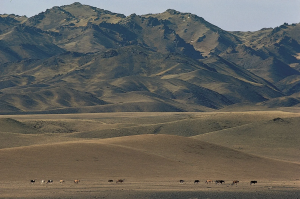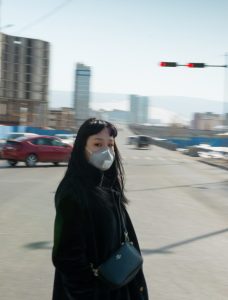138 Beauty, Queerness, and Pollution: Ulaanbaatar through Kush Zorigt’s Camera Lens
Ulaanbaatar Through Kush Zorigt's Camera Lens
mykel2

Mongolia is one of the most sparsely populated nations in the world, and its peoples have historically been highly nomadic.1 However, images of sprawling spaces marked with small communities or empty pastures do not tell the full story of Mongolia.
In his article “How a Young Photographer Puts Modern Mongolia in Focus,” journalist Filip Noubel shines a light on a different Mongolian reality for news organization Global Voices. Noubel interviews Kush Zorigt, a Mongolian artist whose recent photo essay tells the story of Mongolia’s dense urban capital, Ulaanbaatar, a city which holds half of the nation’s population.

Zorigt’s photo essay focuses on three themes he sees in Ulaanbaatar: pollution, chaos, and beauty. Ulaanbaatar is polluted and crowded, and Zorigt says these aspects of life are “something we have gotten used to and now see as normal.” Therefore, he uses his photos to visually portray what he says Mongolians “fail to see.” Zorigt also wishes to “seek out beauty in the city throughout the year.” He captures the coldness and darkness of Ulaanbaatar’s thick-aired, six-month winters, because to Zorigt, “there is something behind these images of long and cold winters . . .”

Additionally poignant is Zorigt’s photographic portrayal of queerness and gender identity. In one photo, viewers see five men holding their knees to their chests, blindfolded by colorful ceremonial scarves. Zorigt says they are blind and hidden, men “who don’t know they are blooming . . . a reference to my personal story of hiding and showing.”
Zorigt uses his camera to produce a collection of information on Mongolia—information that is not generalized or flattening, but his own. His photos allow viewers to look through his eyes for a moment, and what they see is a story of Mongolia that is dimensional, dynamic, and full.
References and Image Sources:
[1, 2] Harris, C. D., Sanders, Alan J.K., & Lattimore, Owen (2022, November 8). Mongolia. Encyclopedia Britannica. https://www.britannica.com/place/Mongolia
[3, 4] Noubel, F. (2020, September 16). How a young photographer puts modern Mongolia in focus. Global Voices. Retrieved January 27, 2023, from https://globalvoices.org/2020/09/16/how-a-young-photographer-puts-modern-mongolia-in-focus/